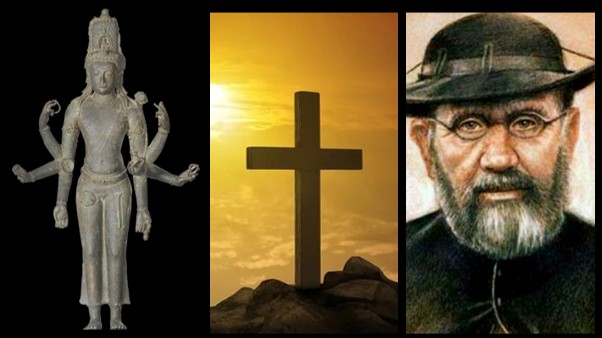This Sunday, the lectionary invites us to reflect on Luke 17:11-19. The English Standard Version supplies the passage with the heading “Jesus Cleanses Ten Lepers.”
It’s important to notice that in the Bible, “leper” means someone with skin disease – not a person who doesn’t feel physical pain and who has oozing sores and severe physical deformities.[1]
Let’s now reflect on the passage.
Ten lepers cried out to Jesus, “Master, have mercy on us.”
They approached Jesus because everywhere he went, people were healed. They addressed him as Master, to show that they honoured him. They asked for a favour, for a free gift, for mercy.
Jesus responded. He told them to go show themselves to the priests. They knew what this meant: they were to get certificates of cleanness, certificates to re-admit them into communities, cities, temples.
They obeyed. Even before they saw the evidence of their leprosy disappear, they walked to the office of the nearest priest. As they walked, their skin became clear. They were “cleansed.” They received mercy.
Malaysia’s National Museum houses a 1,300-year-old statue. It’s rooted in Buddhism. It’s called Avalokitesvara. It evolved into the Daoist goddess of Mercy, Guanyin. Many Chinese go to Guanyin temples and pray for mercy.
Indians, who identify as Hindus, pray to all their gods for mercy.
Many Muslims repeat the capsule word Astaghfirullah 100 times per day. It contains the meaning “I seek forgiveness from God.” They repeat it believing that God will respond by showing them mercy.
Seeking mercy from beyond is one of the characteristics of humans. In many churches, you’ll hear the Greek words Kyrie Eleison. It’s a capsule. It contains the meaning “Lord, have mercy, show us your favour.”
Favour features in the Bible. Luke tells us that the angel Gabriel told Mary God had favoured her. In his story of the Good Samaritan, Jesus taught us the importance God places on showing favour to others. The gospel writers often write of people asking Jesus asking for favour, for mercy.
In today’s report, ten lepers come to Jesus and ask for mercy. Jesus heals them all.
But that’s not always the case. Consider the existence of doctors of clinics, of hospitals, of treatment centres. Consider spending on healthcare.
“GDP” stands for Gross Domestic Product. It’s the value of all goods and services produced in a country. In 2022, 3.9% of Malaysia’s GDP was in the healthcare sector of the economy.[2] This means we spent 67 billion Ringgit on prevention or to healing of diseases in humans.
What do Christians believe about healing?
The gospels suggest that Jesus healed everyone who asked for it. But from the rest of the New Testament, we know that Paul suffered from eye trouble[3] and Timothy suffered from stomach trouble[4]. We also know that James told sick church members to call their leaders to come and anoint them and pray for them – but he doesn’t promise healing.[5]
Perhaps most important is to consider the history of how the church responded to disease, sickness, and suffering.
Always, there was prayer for healing. But they also turned to remedies.
Monks grew herbs in their monasteries and used them to heal diseases.
The evangelist John Wesley, who founded the Methodist church, compiled and published a medical handbook. It was called “Primitive Physick: Or an Easy and Natural Method of Curing Most Diseases.”
Christians established hospitals and developed and delivered medical treatments worldwide. They paid special attention to lepers – the kind with oozing sores and disfigured bodies.
The work of the Catholic priest Father Damien in Hawaii is perhaps best recorded and most forgotten. He chose to live in an isolated leper colony on a hard-to-reach island. He raised funds, built houses, hospitals, and church buildings for lepers. His chief joy was celebrating the mass, the Roman Catholic version of the Lord’s Supper, uttering the words “Kyrie Eleison” and “Lord have Mercy.” Eventually, he contracted leprosy.
For much of his life Damien wasn’t a leper. But for most of his life he was treated by his own order, the “Congregation of the Sacred Heart of Jesus and Mary,” as a Samaritan, as someone who did things differently from his brothers. But like the 10th leper, he never stopped praising God.
Though God didn’t spare him from leprosy, Damien experienced the words of Jesus to the 10th leper, which we read in verse 19:
“Rise and go your way; your faith has made you well.”
Peace be with you.
[1] Hensen’s disease.
[2] Source: World Bank. For comparison, in China, it was 5.4%; in India, it was 3.3%; in Indonesia, it was 2.7%; in Philippines, it was 5.1%; in Australia, it was 10%; in the USA, it was 16.5%.
[3] See Galatians 4:15 and Galatians 6:11.
[4] See 1 Timothy 5:23.
To learn more about Rama, click here.


